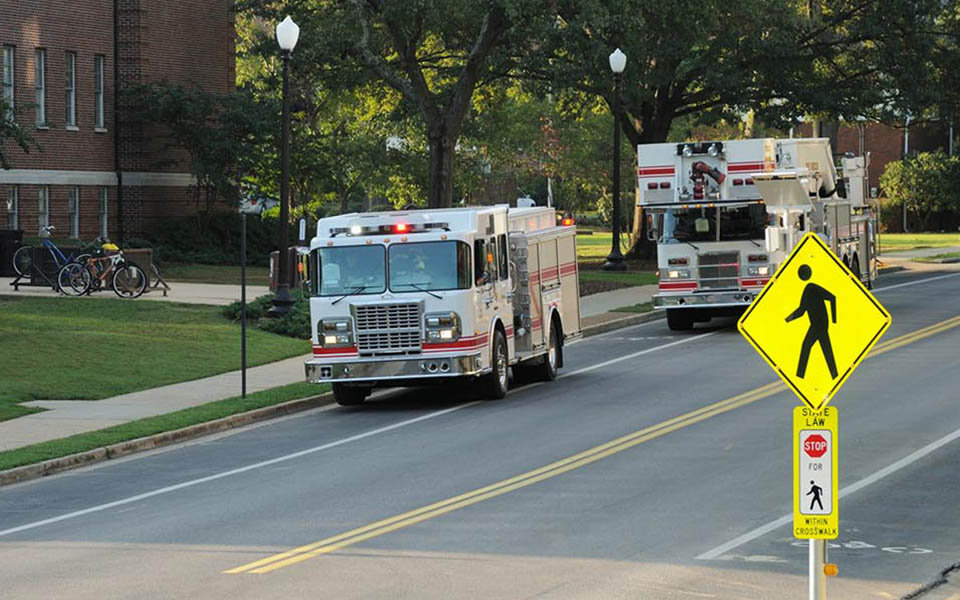Considering record-setting natural disasters throughout the U.S. and the continued prevalence of active shooter events on school grounds, school emergency response plans are a necessity. While most districts and schools have emergency management plans, many aren’t always regularly practiced, coordinated with community resources or updated frequently. As a result, when schools and districts find themselves in situations that merit an emergency response, they are often left unprepared.
Emergencies of all types occur in schools daily and these incidents can have lasting physical, emotional and educational ramifications. Use this guidance to ensure a robust emergency response plan that outlines the essential phases involved in its development and implementation.
Phases of an Effective Emergency Response Program for Schools
Mitigation & Prevention
This phase involves proactive measures school officials and districts can take to eliminate or reduce the impact of potential emergencies. Steps to include in this phase include:
- Bolting bookshelves to the wall
- Fencing off hazardous areas
- Enhancing building security
- Reviewing food preparation, mail handling and building access policies
- Assessing the school’s threats to physical infrastructure, culture and climate
- Implementing anti-bullying policies & wellness activities
- Knowing the school building thoroughly and the community at large.
- Becoming acquainted with local first responders, community partners and the state emergency management agency.
- Bringing together regional, local and school leaders.
- Making regular school safety and security efforts part of larger mitigation and prevention efforts.
- Establishing clear lines of communication.
- Conducting safety and security needs assessments.
- Incorporating lessons learned from previous emergencies and drills to update emergency plans.
- Designating an Emergency Action Plan Coordinator to lead communication efforts between first responders, staff and students.
Preparedness
This phase is designed to ensure the school community is ready to respond effectively to potential emergencies. This phase involves developing protocols and policies, creating incident command systems and conducting formal training and exercises. Ensure your preparedness includes:
- Identifying and involving stakeholders in the planning process.
- Determining what crises the plan will address.
- Defining roles and responsibilities.
- Developing methods for communicating with first responders, staff, students, families and the media.
- Obtaining necessary equipment and supplies.
- Preparing for immediate responses.
- Creating maps and facility information.
- Developing accountability and student release procedures.
- Predetermining policies for locating staff and teachers following an emergency.
- Establishing offsite systems for storing registration information and conducting payroll services.
- Practicing your program with all those affected by a potential emergency. Document successes and deficiencies and adjust accordingly.
- Addressing liability issues.
Response
During an emergency, swift and coordinated action is essential to mitigate harm and ensure the safety of students and staff. This phase should include:
- Expecting the unexpected.
- Assessing the situation and choosing the appropriate response.
- Notifying appropriate emergency personnel and the school crisis response team.
- Evacuating or locking down the premises, as appropriate.
- Triaging injuries and providing emergency first aid to those who need it.
- Keeping supplies nearby and always organized.
- Identifying primary and alternative evacuation sites in case the primary sites are not available during an emergency.
- Moving district resources (e.g., buses) out of the incident area.
- Communicating accurate and appropriate information.
- Activating the student release system.
- If it is a large-scale incident and the buildings are evacuated for an extended period, establishing a system for distributing or disposing of food stored in school facilities,
- Allowing for flexibility in implementing the emergency management plan.
- Documenting the process and success of the emergency management plan and make any necessary adjustments.
Recovery
This phase focuses on restoring normalcy and supporting the emotional and physical well-being of the school community. This involves repairing infrastructure, providing counseling services, and resuming educational activities. Specific actions may include:
- Assembling a crisis intervention team.
- Returning to the “business of learning” as quickly as possible.
- Keeping students, families and the media well-informed.
- Providing assessments of the emotional needs of the staff, students and families.
- Offering stress management after class resumes.
- Conducting daily debriefings with staff, responders and others assisting in the recovery efforts.
- Taking as much time as needed for the recovery.
- Pre-negotiating contracts for transportation, food, construction and other district needs.
- Implementing a system to manage the receipt of any donations.
- Reviewing policies and training and update as needed based on lessons learned.
- Addressing the four phases of emergency management, listed above.
- Taking an “all hazards” approach.
Goal of an Emergency Response Plan
If an emergency management program is created and executed correctly, it should hopefully achieve the following objectives:
- Address the four phases of emergency management listed above.
- Take an “all hazards” approach. This means that the plan addresses the following perils:
- Natural disasters – (e.g., earthquakes, tornadoes, floods, other natural disasters)
- Technological – (e.g., power outages)
- Infrastructure – (e.g., roads, bridges, utilities)
- Nonstructural – (e.g., portable room dividers, bookshelves, suspended ceilings, light fixtures)
- Man-made – (e.g., hazardous materials release, acts of terrorism)
- Biological – (e.g., flu pandemic, contaminated food)
- Physical well-being – (e.g., broken bones from playing too rough, suicide)
- Student culture & climate – (e.g., bullying, drugs, violent behavior on the premises)
We’re Here to Help Schools Create an Effective Emergency Response Program
Take the appropriate measures to make your school and district a safer place to learn and work for everyone. Engaging the local government, law enforcement, your employees, the students, families and the school district in these emergency response efforts will help every aspect of your business. If you need additional risk and insurance solutions or help creating an emergency response plan, connect with a member of our team.
© Copyright CBIZ, Inc. All rights reserved. Use of the material contained herein without the express written consent of the firms is prohibited by law. This publication is distributed with the understanding that CBIZ is not rendering legal, accounting or other professional advice. The reader is advised to contact a tax professional prior to taking any action based upon this information. CBIZ assumes no liability whatsoever in connection with the use of this information and assumes no obligation to inform the reader of any changes in tax laws or other factors that could affect the information contained herein. Material contained in this publication is informational and promotional in nature and not intended to be specific financial, tax or consulting advice. Readers are advised to seek professional consultation regarding circumstances affecting their organization.
“CBIZ” is the brand name under which CBIZ CPAs P.C. and CBIZ, Inc. and its subsidiaries, including CBIZ Advisors, LLC, provide professional services. CBIZ CPAs P.C. and CBIZ, Inc. (and its subsidiaries) practice as an alternative practice structure in accordance with the AICPA Code of Professional Conduct and applicable law, regulations, and professional standards. CBIZ CPAs P.C. is a licensed independent CPA firm that provides attest services to its clients. CBIZ, Inc. and its subsidiary entities provide tax, advisory, and consulting services to their clients. CBIZ, Inc. and its subsidiary entities are not licensed CPA firms and, therefore, cannot provide attest services.















